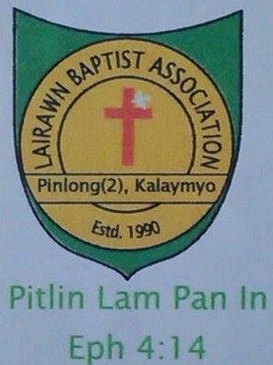Related Research Articles
Zo is a Northern Kuki-Chin-Mizo language originating in western Burma and spoken also in Mizoram and Manipur in northeastern India.
The Lai people mainly inhabit the southern parts of Chin Hills in Myanmar's Chin State, in the townships of Falam, Thantlang and Hakha. They are also found in the Lawngtlai district of Mizoram, India, where they have been granted the Lai Autonomous District Council. Outside this area they are scattered in Mizoram and in Manipur. Their languages "Lai holh" and "Hakha holh" are classified as Central Kuki-Chin languages.
The Kuki-Chin languages are a branch of the Sino-Tibetan language family spoken in northeastern India, western Myanmar and southeastern Bangladesh. Most notable Kuki-Chin-speaking ethnic groups are referred to collectively as the Zo people which includes: the Mizo of Mizoram, the Kuki of Manipur, Assam, Nagaland, Tripura and Bangladesh and the Chin of Chin State, Myanmar.
The Lai languages or Pawih/Pawi languages are various Central Kuki-Chin-Mizo languages spoken by the Lai people or Pawi. They include “ Laiṭong” (Falam-Chin) spoken in Falam district, Laiholh (Hakha-Chin) spoken around the Haka (Hakha/Halkha) capital of Chin State in Burma (Myanmar) and in the Lawngtlai district of Mizoram, India. In Bangladesh, a related language is spoken by the Bawm people. Other Lai languages are Mi-E, and the Zokhua dialect of Hakha Lai spoken in Zokhua village.
The Tedim language is a Tibeto-Burman language spoken mostly in the southern Indo-Burmese border. It is the native language of the Tedim tribe of the Zomi people, and a form of standardized dialect merging from the Sukte and Kamhau dialects. It is a subject-object verb language, and negation follows the verb. It is mutually intelligible with the Paite language.
Mro-Khimi is a Kuki-Chin language of Burma spoken by the Mro-Khimi people. The Mro-Khimi varieties share 91% to 98% lexical similarity. Mro-Khimi is 86%–90% lexically similar with the Likhy variety of Eastern Khumi, 81%–85% with Lemi variety of Eastern Khumi, and 77%–81% with Kaladan Khumi.
Khumi, or Khumi Chin, is a Kuki-Chin-Mizo language of Burma, with some speakers across the border in Bangladesh. Khumi shares 75%–87% lexical similarity with Eastern Khumi, and 78-81% similarity with Mro-Khimi.
Karenni or Red Karen, known in Burmese as Kayah, is a Karen dialect continuum spoken by over half a million Kayah people in Burma.
Senthang is a Kuki-Chin-Mizo language of Burma. The Senthang dialects share 79% to 95% lexical similarity.
Kʼchò, or Mün, is a Kuki-Chin language of Myanmar. After a survey conducted in 2005 in Southern Chin State, Mang estimated the K’chò Region to be Mindat Township //, Kanpetlet Township // and one village in Matupi // or //.
Daai, which borders the Mün and Ütbü language groups, is a Kuki-Chin of Myanmar. It is spoken in 142 villages in Kanpetlet, Matupi, Mindat, and Paletwa townships in Chin State, Burma (Ethnologue).
Shö is a Kuki-Chin language dialect cluster of Burma and Bangladesh. There are perhaps three distinct dialects, Asho (Khyang), Chinbon, and Shendu.
Ngawn or Ngawn Chin is a Chin language spoken in Falam District, Chin State, and Kale District, Sagaing Region, Burma. There are 27 Ngawn villages in Falam township, Chin State.
Pangkhua (Pangkhu), or Paang, is a Kuki-Chin language primarily spoken in Bangladesh. Most speakers of Pangkhu are bilingual in Bengali, and most education in Pangkhu is conducted in that language.
Lautu, widely known as Lautu Chin, is a Kuki-Chin language spoken in 16 villages in Matupi townships, Thantlang townships and Hakha townships, Chin State, Myanmar. The Lautu Chin dialects share 90%–97% lexical similarity. Lautu Chin has 87%–94% lexical similarity with Mara Chin, 82%–85% with Zophe Chin, 80%–86% with Senthang Chin.
Laitu "လေးတူ" is a Kuki-Chin language of Burma. It is partially intelligible with Sumtu Chin. In Sittwe District, Rakhine State, Laitu is spoken in Minbya, Mrauk-U, and Myebon townships, and is also spoken in Paletwa township, Chin State. Laitu has 91-96% lexical similarity with Sumtu Chin and Songlai Chin, 85-89% similarity with Chinbon Chin, and 82-84% lexical similarity with Asho.
Songlai is a Kuki-Chin language of Burma. It is 90% lexically similar to Laitu Chin, but not mutually intelligible. Dialects are Doitu, Hettui, Mang Um (Song), and Lai.

Lairawn Baptist Association(LBA) is a Baptist Christian denomination throughout Kalay Valley, Sagaing Division, Myanmar. The LBA mainly serves the Chin people who speak Falam dialect. It is one of the twenty eight associations of Chin Baptist Convention which is under the umbrella of Myanmar Baptist Convention (MBC). As of 2015, the association has 78 pastors and 21305 members. The association is divided into 12 areas and each area has their own by-law and constitution, but they work together with each other in unity in the context of LBA, encouraging and resourcing each other.
The Zanniat tribe are people of western Myanmar (Burma) who are a sub-group of the Chin peoples. The Zanniat tribe has fifty-seven sub-groupings and clans. The group's existence was recorded in Burma's 1931 census after being absent in the Chin Hills gazette of 1896. In 1943, the Zanniat tribal groups of eastern Falam Township were recorded by Henry Stevenson. The Zanniat may also be known by similar sounding names such as Zahnyiet, Zanniet, Zanngiat and Zannaing.
References
- 1 2 Falam Chin at Ethnologue (18th ed., 2015) (subscription required)
Bualkhaw Chin at Ethnologue (18th ed., 2015) (subscription required)
Ngawn Chin at Ethnologue (18th ed., 2015) (subscription required) - ↑ Endangered Languages Project data for Chorei.
- ↑ King, Deborah (2010). VOICE AND VALENCE-ALTERING OPERATIONS IN FALAM CHIN: A ROLE AND REFERENCE GRAMMAR APPROACH. Arlington, Texas: The University of Texas at Arlington.
- 1 2 "Myanmar". Ethnologue: Languages of the World. 2016. Archived from the original on 2016-10-10.
- ↑ Linguasphere code 73-DDD-bp
- ↑ Chin Writers' Handbook. Grand Rapids, Michigan, USA: Bibles International. 2011.
